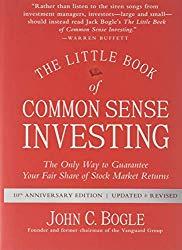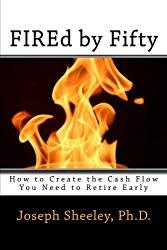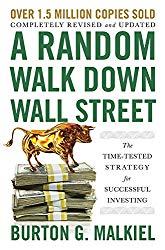One question many new investors have when they’re starting to invest in stocks is how to know what they should be paying for a stock. If Ebay is selling for $25 per share, is that a good price, or would I be paying too much if I were to buy in right now? If Amazon is selling for $1000 per share now and was selling for $800 last year, is it too expensive now, or does this mean that it’s a great time to buy because it’s going up?
(Note, this site contains affiliate links. When you click on an affiliate link and buy something, The Small Investor will get a small commission for the referral. You are charged nothing extra for the purchase. This helps keep The Small Investor going and free. I don’t recommend any products I do not fully support. If you would like to help but don’t see anything you need, feel free to visit Amazon through this link and buy whatever you wish. The Small Investor will get a small commission when you do, again at no cost to you.)
Think you can predict what will happen next week or next month? Think again.
First let me say that it is almost impossible to predict short-term prices. Just because a stock seems pricey compared to where it was a week ago does not mean that it will not continue to go up. Likewise, just because a stock
The great investor, Benjamin Graham

That said, it is often difficult to ignore the price movements in your portfolio. Everyone likes to see their stocks go up in price and gets a little worried when they seem them fall. At times it seems like one can guess the next movement of a stock based on what has happened in the past. We say, “Surely the stock needs to drop in price sometime. There is no way it can continue to climb like this.” Or, “Look at how far it has fallen. It’s just got to rebound.” CNBC and other business shows encourage this behavior by talking about stocks being “overheated” or “in bargain territory.” Ignore all of this and accept that you just don’t know. If you think that you do, you’re fooling yourself.
So why do people draw all of those charts?
While prices do seem to follow a pattern and there is a whole set of theory involving charting and numerous numerical schemes, the movement of stock prices in the near-term are basically random. The trouble is that we try to see patterns, even in random events. Casinos even encourage this with a display of recent rolls at the roulette

(If you enjoy The Small Investor and want to support the cause, or you just want to learn how to become financially independent, please consider picking up a copy of my new book, FIREd by Fifty: How to Create the Cash Flow You Need to Retire Early This is the instruction manual on how to become financially independent.)
Because people think that they can see patterns, however, just like they think that they can see figures in the clouds, there are lots of people who make charts and try to divine the near future. They may also combine a bunch of factors, like stock price, number of up or down days in a row, and share volume into some sort of formula and try to determine if shares are expensive or cheap. What you’ll often find about charting is that it is like driving with the windshield covered over with condensation. You can see where you are and where you’ve been, but you have no idea what will happen in the future. If the road is curving, it may continue to curve, but then again it may straighten out, or curve the other way. You just don’t know.
FIREd by Fifty: How to Create the Cash Flow You Need to Retire Early

That said, don’t worry. The price is always right.
While prices include a lot of random factors, the time to buy and sell a stock is always, now. You don’t need to worry that you’re paying too much or selling for too little. This is because of what is called “efficient market theory.” (To learn a lot more about efficient market theory, check out A Random Walk Down Wall Street

As long as there are enough people out there bidding on the stock, you don’t need to worry that you’re paying too much or selling for too little like you might be when buying or selling a used car. It won’t be like you’ll buy the shares and then someone else will get the shares $10 cheaper because he knew something that you didn’t. The price may change suddenly because some news comes out, or it may change suddenly because of the random fluctuations we’ve been talking about, but you won’t pay too much or sell for too little because there was some information out there others knew but you didn’t. (Insider trading is an exception, because then there actually was new information not known to the public, which is illegal for just this reason.) And the effects of random fluctuations tend to be small and will balance out over time. Sometimes you’ll buy on a bump, other times you’ll buy on a dip.
Looking long-term
Making predictions short-term is impossible. The long-term price is a different story. This is because a company that becomes more productive, expands into new markets, makes more money, and generates a higher profit will become more valuable. This does not mean that you can predict when the share price will increase – that’s up to Mr. Market – but you can often predict that it will be higher at some point in the future. In fact, you can almost predict the range in which future share prices will be by looking at how fast the company can grow and become more valuable
The ability to predict the long-term price depends upon the ability to predict earnings. For some companies this is extremely difficult because earnings can change greatly based on world events. The semiconductor industry is a good example because prices for chips can fall suddenly when a company starts mass producing chips and dumping them on the market. Earnings can be growing rapidly, but then fall off of a cliff within the year. Because earnings are unpredictable, predicting price 5, 10, or 20 years out is difficult. Other companies are a different story.
Want all the details on using Investing to grow financially Independent? Try The SmallIvy Book of Investing.
Retail stores, restaurants, technology companies, service industries, and others tend to have fairly predictable earnings. Because they have a set of customers who tend to buy from them again and again their earnings tend to be more stable. Add a little knowledge of the rate of current expansion and a reasonable prediction of future earnings results. The old, established companies that own everything (see Clorox
Most stocks therefore have a wide field of analysts who analyze the company. One of the products that they produce is earning projections for the next quarter and the next few years that can be found on various websites and publications. Like anything, the near-term predictions are better than the far-term, but a company that has been growing at a steady pace for the last several years can usually be expected to keep the growth rate provided that there is still room to grow.
You won’t always be right
While you can often predict which companies will do well, it won’t always happen. Sometimes things will happen and a company won’t do as well as you were expecting. Sometimes there are things like fraud or lawsuits that bring a promising company down. But the beauty of it is that, because of the way stocks are priced, if you buy enough different stocks, your gains will make up for your losses and give you a large enough return to justify the risks that you are taking.
Think of it this way: Let’s say you were flipping a coil and betting on heads or tails. If you were to bet $100 and flip it only once, you might be up $100 or lose $100. Chances are 50-50 of either event occurring. But if you did this 1000 times, while you would probably see your earnings rise and fall randomly over time, chances are that you’d end up somewhere close to even, at least on average (most of the time you’d be up or down less that $1000). (If you paid out $10 every time you flipped, whether you won or lost, you would slowly lose money over time. This is what it is like when you try to trade on short-term fluctuations.)
Let’s say now that you make $200 each time you win, but only lose $100 each time you lose. After one flip you might be up $200 or down $100. If you flipped 1000 times, however, you would likely be up somewhere between $70,000 and $130,000 because, on average, you would gain $100 per flip.
Stocks are priced by the markets based on not only what future earnings are expected to be, but based on the likelihood that they will actually make those earnings. If a company is almost certain to double earnings over the next 10 years, the share price will almost always double right away, before you have a chance to buy in. This means that it will rise very little over the next 10 years even though earnings are increasing. If there is a 50-50 chance it will double earnings, the share price may stay where it is now but actually double over that 10 year period if the company succeeds. You’ll be able to buy it low because earnings are no where near certain, so there is a lot more risk. This means that, assuming both companies make their earnings targets, you will double your investment in the second company, while making only a small return from the first.
But when the company does not succeed, your investment will be flat or maybe even decline a little. So, if you buy just one company, you have a 50-50 chance of making a big profit, but an equal chance of making nothing or losing money. If you buy enough different companies that have the same level of risk as the second company, however, your winners will offset your losers and you’ll make more money than you will if you instead bought a bunch of “sure things” like the first company described. Note, you don’t need to worry about this because, again, the price you pay will have this risk effect factored in.
Have a burning investing question you’d like answered? Please send to [email protected] or leave in a comment.
Follow on Twitter to get news about new articles. @SmallIvy_SI
Disclaimer: This blog is not meant to give financial planning or tax advice. It gives general information on investment strategy, picking stocks, and generally managing money to build wealth. It is not a solicitation to buy or sell stocks or any security. Financial planning advice should be sought from a certified financial planner, which the author is not. Tax advice should be sought from a CPA. All investments involve risk and the reader as urged to consider risks carefully and seek the advice of experts if needed before investing.
